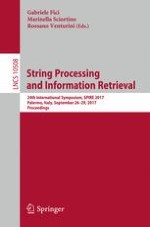2017 | Buch
String Processing and Information Retrieval
24th International Symposium, SPIRE 2017, Palermo, Italy, September 26–29, 2017, Proceedings
herausgegeben von: Gabriele Fici, Marinella Sciortino, Dr. Rossano Venturini
Verlag: Springer International Publishing
Buchreihe : Lecture Notes in Computer Science
